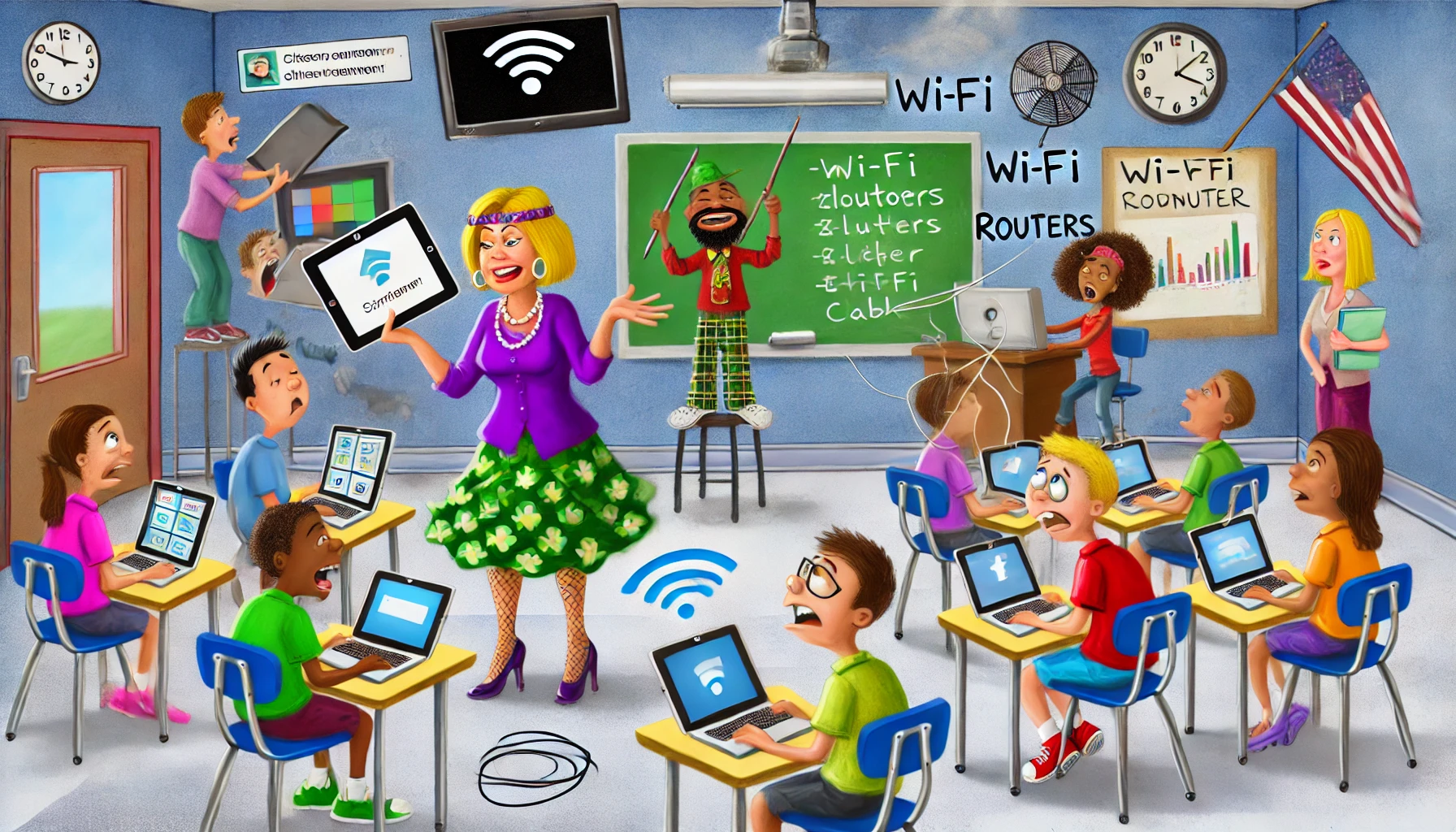The Hidden Challenges of EdTech: What Every Educator Needs to Know Before Going Digital

The Logistical Maze of EdTech Integration
Let’s start with the basics. You might think that bringing a little technology into the classroom would be as simple as plugging in a few devices and watching the magic happen. Well, let’s just say it’s a tad more complicated than that. Imagine juggling iPads, Chromebooks, smartboards, and whatever new gadget is being hyped at the moment. Before you know it, your classroom has turned into a tech laboratory, and you, my friend, are its mad scientist. The first hurdle? Infrastructure. Many schools are still running on internet connections that feel like they were forged in the dial-up era. Wi-Fi drops faster than a student’s attention span after lunch. And if your school is lucky enough to have reliable connectivity, there’s still the matter of ensuring every student has access to a device. It’s like trying to feed a family of 10 with a single pizza – someone's going to be left hungry.
Financial Constraints: Is Your Budget Ready for the Digital Age
Now, let’s talk money. No surprise here, but EdTech is not cheap. Schools across the country are already struggling with tight budgets. Introducing tablets and laptops into the mix can feel like ordering filet mignon on a fast-food budget. It's not just about purchasing the initial devices either – there are subscriptions, software updates, and, of course, the inevitable 'accidents.' (If you’ve ever seen a student drop a $500 tablet, you know the sinking feeling I’m talking about.) But beyond the cost of the tech itself, schools must also think about maintenance and repairs. IT support becomes a full-time job, and training staff to use these tools efficiently adds another layer of expense. Districts often rely on grants or corporate sponsorships to fund these digital dreams, but these aren’t always guaranteed. The financial burden often falls on teachers and parents, who may be asked to chip in for apps or hardware upgrades.
The Pedagogical Puzzle: Tech Alone Isn’t Enough
All right, let’s dive into the real meat of the issue: pedagogy. Sure, technology can enhance learning, but simply plopping a device in front of a student won’t make them a genius overnight. There’s a balance between using tech as a tool and letting it become a crutch. Many teachers struggle with finding this balance. How much screen time is too much? How do you ensure that students are using their devices productively and not just playing games under the guise of ‘learning apps’? Additionally, there’s the question of how well the tech aligns with the curriculum. While EdTech can offer personalized learning experiences, it can also be difficult to fit into the traditional model of education. Teachers may find themselves rewriting lesson plans and reshaping their teaching style to adapt to the digital shift. It’s not a one-size-fits-all solution, and many educators are left feeling overwhelmed by the rapid pace of change.
Bridging the Digital Divide: Addressing Inequality
It’s no secret that not all students have equal access to technology at home. This is often referred to as the 'digital divide' – a gap that’s becoming more and more glaring as schools lean on EdTech to support learning. While some kids are typing away on brand-new MacBooks in their personalized study nooks, others are struggling to complete assignments on outdated devices or even sharing one family computer. Schools in underserved areas may find it challenging to close this gap, and without proper funding or resources, it’s easy for students to fall behind. Solutions like providing loaner devices or establishing community tech hubs are steps in the right direction, but they require coordination, commitment, and yes, more funding. Bridging the divide is about more than just handing out laptops; it’s about ensuring all students have the same opportunities to succeed in a tech-driven world.
Solutions: How Schools Can Navigate the EdTech Revolution
So, how do we overcome these obstacles? First and foremost, schools need a clear plan for EdTech integration. Start small – there’s no need to digitize the entire classroom overnight. By piloting programs, schools can gauge what works and what doesn’t, adjusting their strategies as they go. Training is key – both for teachers and students. After all, the most advanced software in the world is useless if no one knows how to use it properly. Partnering with tech companies or utilizing government grants can also ease the financial strain. Schools should advocate for tech budgets that go beyond flashy gadgets and consider the long-term costs of maintenance, training, and updates. Last but not least, collaboration is critical. Educators should form networks to share tips, tools, and strategies for navigating the EdTech landscape. When schools and educators work together, they can turn this digital dream into a sustainable reality.
Is EdTech the Future of Education?
At the end of the day, the potential of EdTech is undeniable. But without proper planning, funding, and support, it risks being just another classroom fad. What do you think? Is EdTech a tool for progress, or are we moving too fast without considering the long-term impact?



